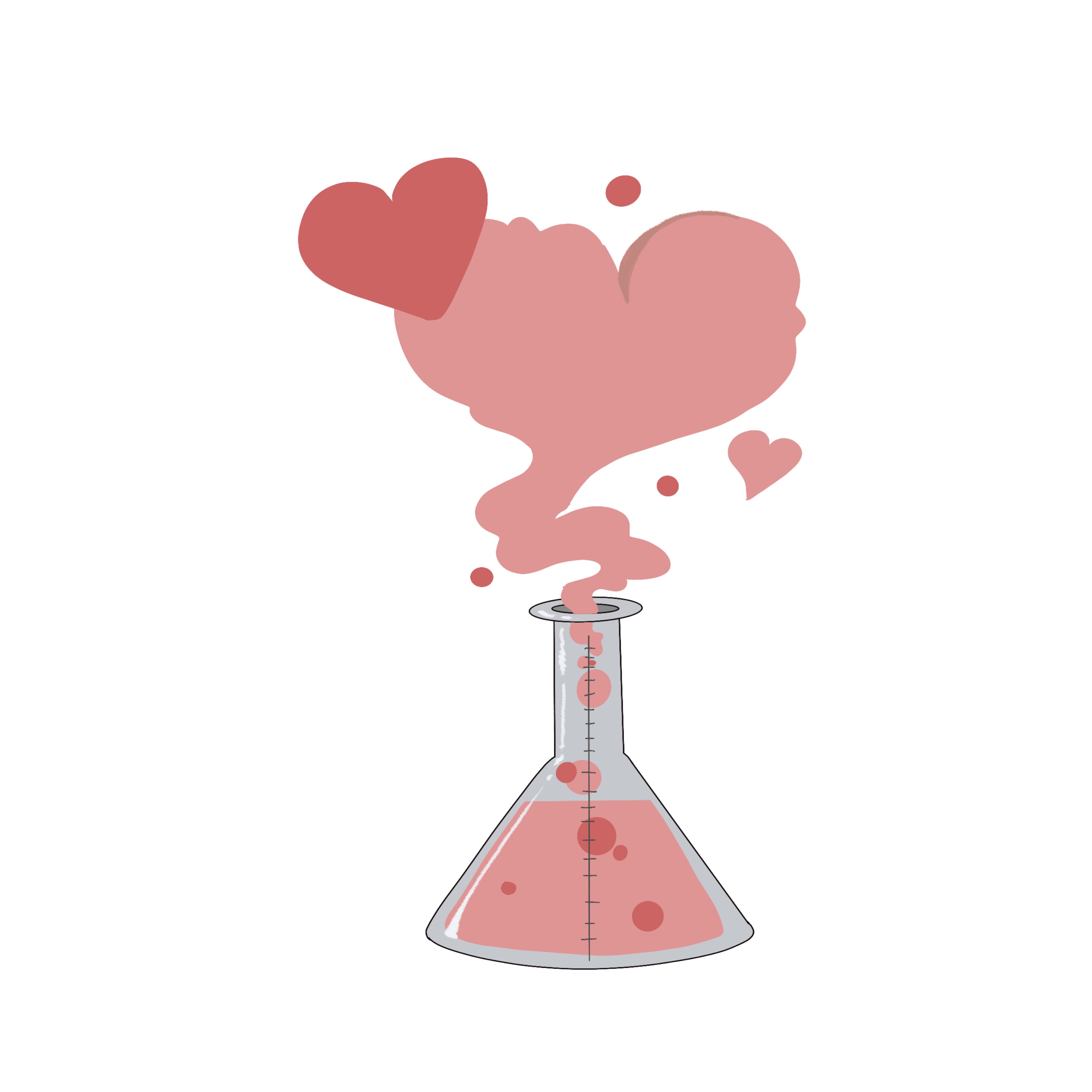Chemistry of love
What really happens when enamored
Illustration by Savannah Donald/Staff Illustrator
Whitney Sides
Blazer News Reporter
whitsides@uab.edu
When falling in love, analyzing the flow of neurotransmitters may be the last thing on one’s mind. However, its role is central when falling head over heels for someone.
One of the first researchers in this area was Helen Fisher, biological anthropologist and professor at Center for Evolutionary Studies at Rutgers University. She wrote a study where she investigated the brain circuitry of romantic love. She dissected the concept of love into three stages: lust, attraction and attachment.
According to Fisher’s research, lust comes first. It is a heady mix of the sex hormones testosterone and estrogen pumped directly from the amygdala into the genitals.
“[Passionate love] is really is a complex mix,” said Douglas Fry, Ph.D, chair of the Anthropology department at UAB. “Equal parts epigenetics and environment.”
Fry’s recent research has followed both violent behavior as well as peace across cultures. He said that the association of passion and romance to lasting love in Western culture is not shared in every society. Second, comes attraction. According to the Neuroendocrinology of love, a study done by the National Institute of Health, this stage is mediated by hormones of stress and reward, which results in an increased heart rate.
This mix is meant to solidify bonds between mammals. Oxytocin, specifically, is released in large amounts to new mothers, increasing chance of survival for all members of a family unit. The process of imprinting combines both a person’s experiences and their own personal chemistry, the study said.
Fry said that placing value in attraction when seeking a long-term partner is a relatively new concept. The final stage is attachment. In this phase, the initial stress that comes with lust and attraction is fulfilled in the stability of a deeper relationship. Repeated positive experiences, such as pair-bonding, can imprint upon the emotional memory of a person.
“In my area of research, emotional memories are very strong and play an important role downstream in having a lasting effect on your DNA,” said Farah Lubin, associate professor in the Department of Neurobiology at UAB, who specializes in memory research.
Her work in the area of epigenetics focuses on how sensory input helps to encode neurons for memory, providing lasting change in your genetic code. According to Lubin, emotional sensory input helps to encode neurons for persistent change in a person’s DNA. This means emotions can possibly be imprinted in the DNA if they are constantly recalled.
“The human body is wild,” Lubin said. “Loving memories are powerful but what’s significant to you might not be as significant to me. People are different. A single rose could mean the world to you but if in my experience I get roses every day, it might not imprint as much.”
Lubin said that we have somewhat control over our emotional memory.
“Emotional memories are some of the strongest,” Lubin said. “If you have an emotional memory, sure it might come back but it will also go away if you don’t constantly think of it.”



